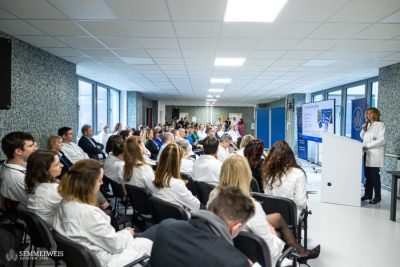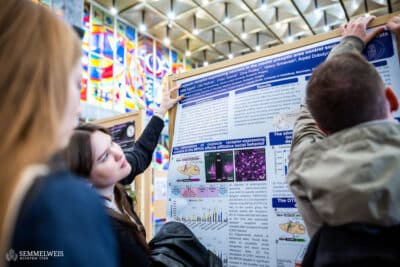Semmelweis University, as Hungary’s largest medical and higher education institution, considers it important to play an outstanding role in the field of social responsibility in Hungary in addition to its classical tasks, such as medicine, research and education. Ten years ago, the first in-patient department for rare diseases was established at the Institute of Genomic Medicine and Rare Disorders (GRI).
Rare diseases affect up to one in two thousand people. Currently there are 6-8,000 types of them. 50-75% of the patients are children. Today, 27-36 million people in Europe suffer from a rare disease, while in Hungary more than 700,000 people are affected. These conditions are often associated with life-threatening conditions or chronic deterioration. They often affect several organs and areas of the body and are therefore complex and hard to diagnose, with no cure in most cases. There is mostly only symptomatic treatment for them. Because of their rarity, these conditions are poorly understood, there is a general lack of information and patients often struggle with the disease without diagnosis or treatment, almost hopelessly, affecting not only themselves but also their families, friends and acquaintances.
Therefore, these patients are disadvantaged not only compared to the majority of society, but also compared to other patients due to the general lack of information and its consequences.
You can read further details of the conference here (in English) and here (in Hungarian).
Institute of Genomic Medicine and Rare Disorders
Translated by Rita Kónya
Featured image (illustration): RIROSZ


